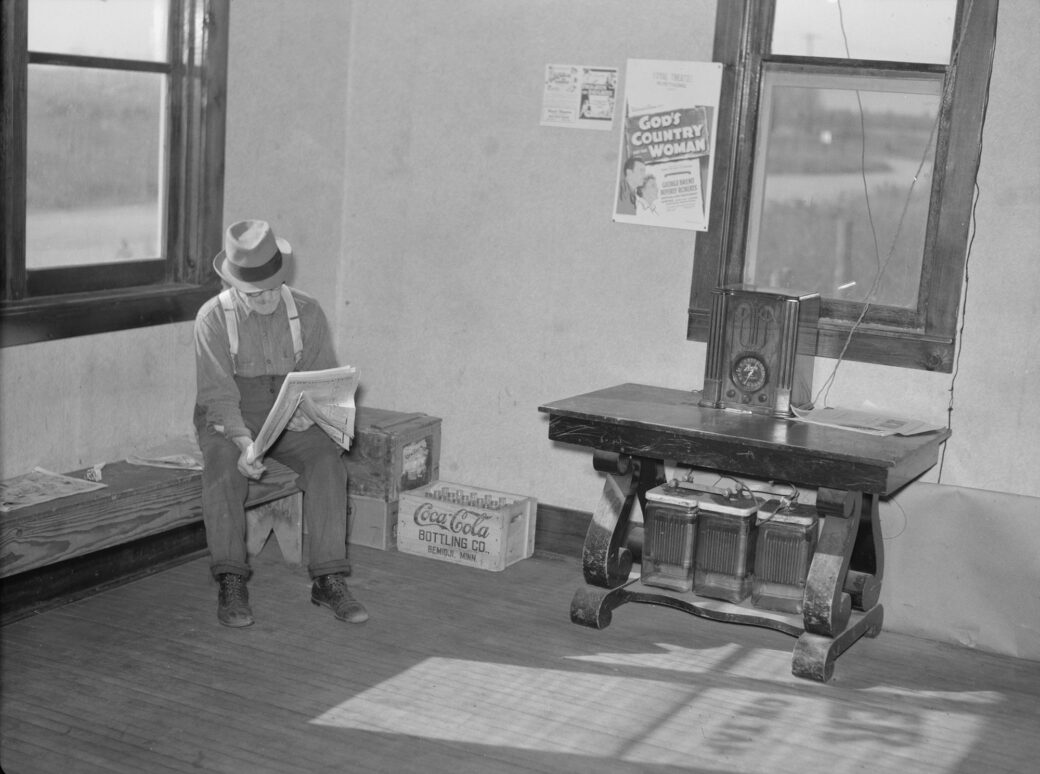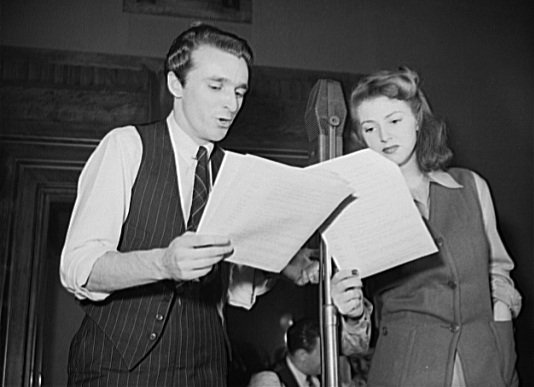
For the radio, the 1930s was a golden age. At the start of the decade 12 million American households owned a radio, and by 1939 this total had exploded to more than 28 million. But why was this ‘talking telegram’ so popular? As technology improved radios became smaller and cheaper. They became the central piece of furniture in the average family’s living room, with parents and children alike, crowding around the set to hear the latest instalment of their favourite show. Radio may have had such mass appeal because it was an excellent way of uniting communities of people, if only virtually. It provided a great source of entertainment with much loved comedians such as Jack Benny and Fred Allen making their names on the wireless. It marked the advent of the soap opera, a running story that people could return to, with characters they could sympathise with and love. The series ‘Our Gal Sunday’ - about a small town girl finding love with a wealthy Englishman - had the young women of the country glued to their sets. Radio programs provided a source of inspiration, with heroes like the Lone Ranger and The Shadow getting embroiled in deadly capers. But they also promoted old-fashioned American family values and gave people a model to live by. On Wednesday nights at 8pm when the public tuned in to ‘One Man’s Family’ they were greeted with the opening: ‘Dedicated to the mothers and fathers of the younger generation and to their bewildering offspring.’ News broadcasts also influenced the way the public experienced current affairs. When the Hindenburg airship exploded in 1937, reporter Herb Morrison was on the scene, recording the events to be broadcast the following day.But above all the radio provided a way to communicate like never before. Franklin Roosevelt’s ‘fireside chats’ helped the population feel closer to their president than ever. By the end of the decade radio had exacted quite an influence on the American media. Advertisers capitalised on radio’s popularity and the idea of the ‘sponsor’ was born. Radio also helped establish the national broadcasting networks such as NBC and CBS, still present to this day.After the 1930s the popularity of radio began to decline at the hands of newer, more visual technologies. But the influence of the ‘golden age of radio’ on the American way of life will never be forgotten.
Radio in the 1930's. https://www.pbs.org/opb/historydetectives/feature/radio-in-the-1930s/. Accessed Sept. 11, 2020.

President Franklin D. Roosevelt giving a radio broadcast (“fireside chat”), September 1934.
Roosevelt, Franklin D.: “fireside chat”. Image. Britannica School, Encyclopædia Britannica, 7 Feb. 2020. school.eb.com/levels/high/assembly/view/218301. Accessed 11 Sep. 2020.

President Franklin D. Roosevelt delivering his first Fireside Chat on March 12, 1933. These radio talks connected Americans to the White House in a way no medium of communication had yet allowed.
The White House Historical Association. https://www.whitehousehistory.org/the-fireside-chats-roosevelts-radio-talks. Accessed Sept. 11, 2020.

A workman and his daughter tune in to the radio in Tehama County, California, 1940.
The White House HIstorical Association. Library of Congress. https://www.whitehousehistory.org/the-fireside-chats-roosevelts-radio-talks. Accessed Sept. 11, 2020.

Girl listening to vacuum tube radio during the Great Depression.
Franklin D. Roosevelt Library Public Domain Photographs. https://en.wikipedia.org/wiki/Golden_Age_of_Radio#/media/File:Girl_listening_to_radio.gif. Accessed SEpt. 11, 2020.

The radio sound room at the U.S. Capitol.
History, Art & Archives, U.S. House of Representatives, “Radio and Congress:
Connecting the House to the Home,” https://history.house.gov/Exhibitions-and-Publications/Electronic-Technology/Radio/ (September 11, 2020)

The cast of the NBC radio show Oxydol's Own Ma Perkins in 1933. Ma Perkins was the first daytime radio serial sponsored by the Procter & Gamble Co.
National Public Radio. https://www.npr.org/2009/10/23/113844245/remembering-the-great-depressions-sunny-side. Accessed Sept. 11, 2020.

Radio-related World War II propaganda poster.
National Archives and Records Administration, https://en.wikipedia.org/wiki/Golden_Age_of_Radio#/media/File:Radio_-_Keep_It_Free.jpg. Accessed Sept. 11, 2020.

Radio technology brought the president’s voice all the way from the White House to remote areas like this beer parlor in Gemmel, Minnesota, 1937.
The White House HIstorical Association. Library of Congress. https://www.whitehousehistory.org/the-fireside-chats-roosevelts-radio-talks. Accessed Sept. 11, 2020.

Representatives from the House of Representatives listening to the Capitol radio.
History, Art & Archives, U.S. House of Representatives, “Radio and Congress:
Connecting the House to the Home,” https://history.house.gov/Exhibitions-and-Publications/Electronic-Technology/Radio/ (September 11, 2020)
New York Public Radio Flyer
New York City Public Radio. https://www.wnyc.org/awards/. Accessed SEpt. 11, 2020.

Rehearsal for the World War II radio show You Can't Do Business with Hitler with John Flynn and Virginia Moore. This series of programs, broadcast at least once weekly by more than 790 radio stations in the United States, was written and produced by the radio section of the Office of War Information (OWI).
Library of Congress Print and Photographs.https://en.wikipedia.org/wiki/Golden_Age_of_Radio#/media/File:You_Can't_Do_Business_with_Hitler_rehearsal.jpg. Accessed Set. 11, 2020.